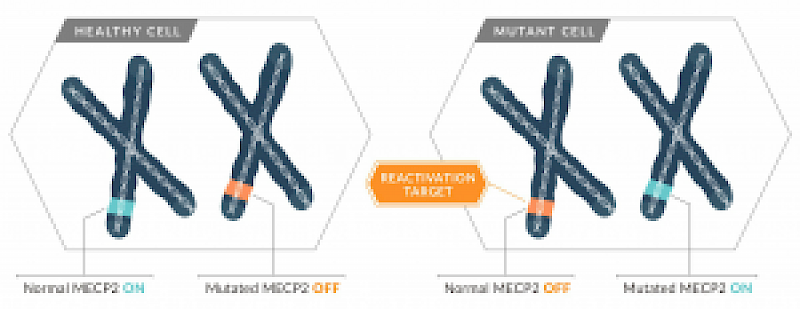Wake Up MECP2!
There is no mystery about why a girl suffers from Rett Syndrome. The cause is the mutated copy of the MECP2 gene inhabiting her cells.
But since MECP2 is on the X chromosome and all females have two X’s, beside each mutated gene rests a healthy but silenced twin. What if we could replace the flawed gene by reawakening its silenced counterpart? If we could wake up MECP2 in enough cells we could conceivably reverse Rett symptoms.

This is an approach that RSRT has championed since our launch in 2008. We are funding seven labs that are pursuing this line of work.
You may ask why do we need multiple labs working on the same goal. Isn’t that a waste of effort and money? The answer is a resounding “NO”. While the end game is the same each lab is using a different strategy to get there.
For example, the types of cells that labs are utilizing are different. Ben Philpot and colleagues at UNC are working with mouse neurons, Toni Bedalov and Jeannie Lee are using fibroblast cells, others still are using human cells. Each cell type has its own set of advantages and disadvantages.
The labs are also using different “reporters” – meaning how the cells are designed to detect activation of MECP2. Different compound libraries at different concentrations are being screened. Compounds are also being screened at various degrees of high and low throughput. And finally different criteria are being employed to define a “hit” (drugs that reactivate MECP2).
Having multiple labs attack this problem gives us more shots on goal and added assurances regarding the quality of any potential hits.
Two weeks ago we gathered everyone tackling this approach and brought them together for two intense days of talks and discussions.
Over the past 15 years I’ve organized dozens of meetings and before each one I worry – will the discussions be forced or will they flow naturally? will collaborations ensue? It was no different with this meeting. The first few talks of the day however quickly put me at ease. While a number of common hits were reported in multiple labs much validating and further screening remains to be done. At the meeting, and in emails and phone calls since, the scientists are working out the logistics of validating each others hits, trading cell lines and compounds. Exactly the outcome I was hoping for.


